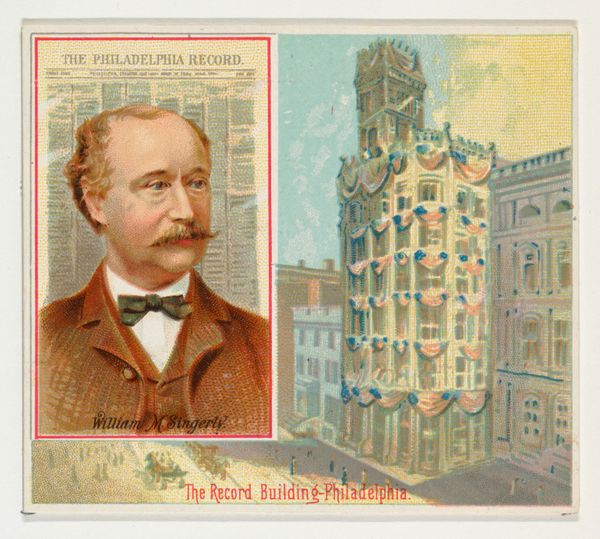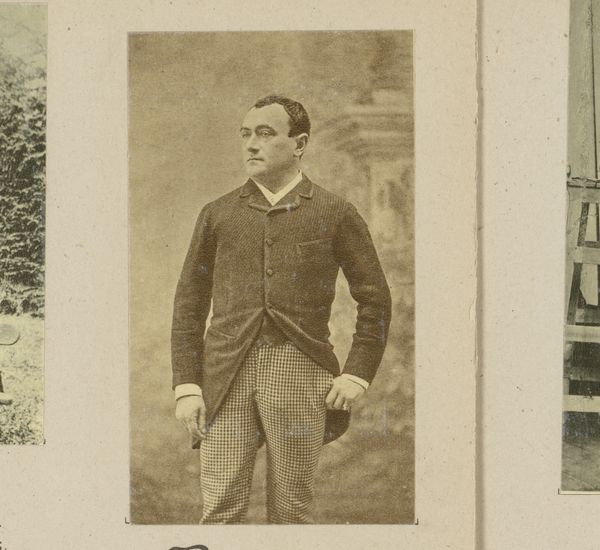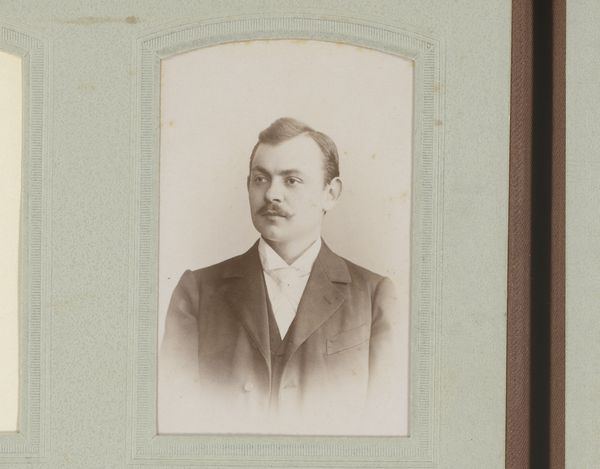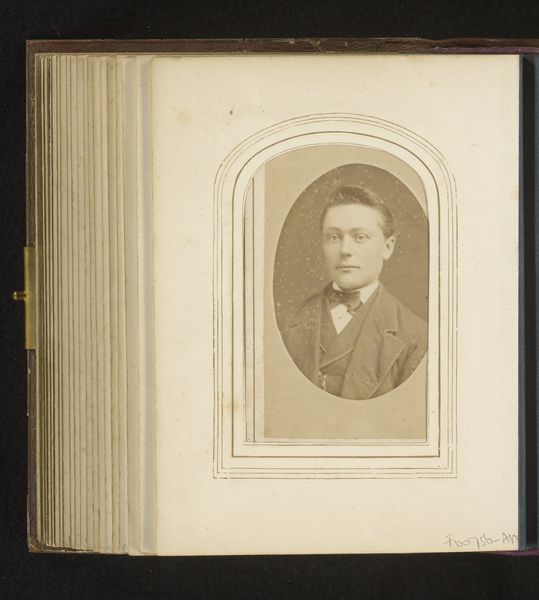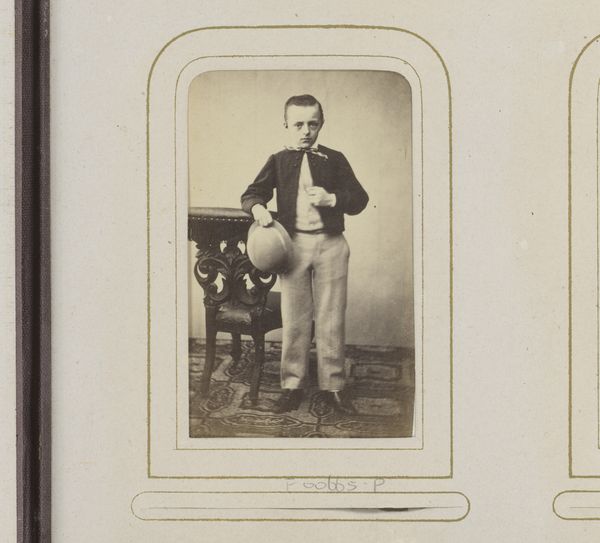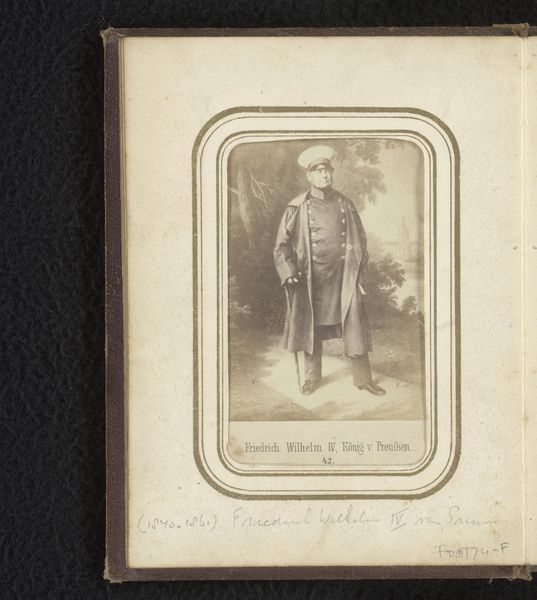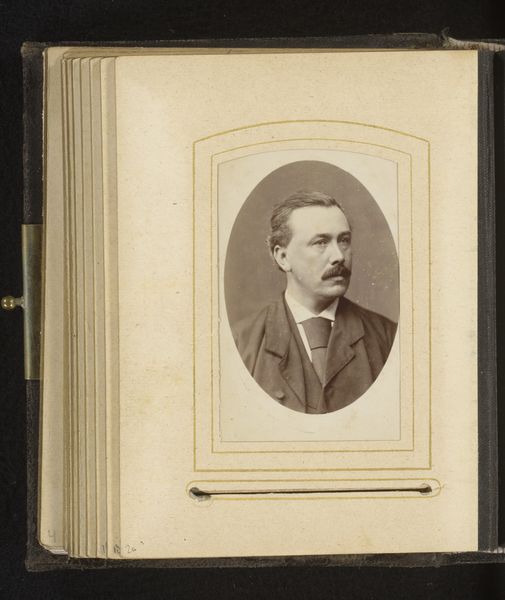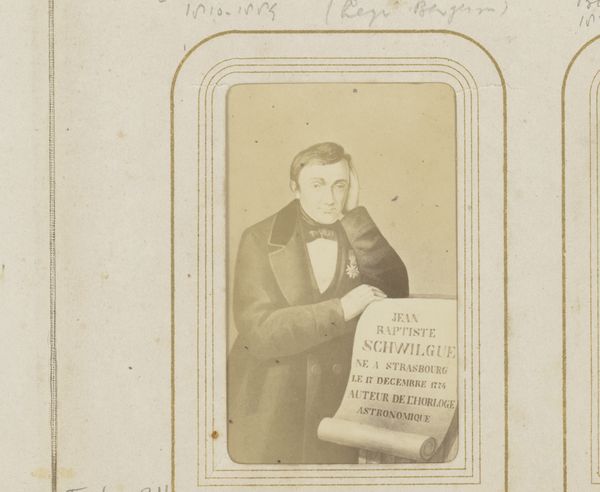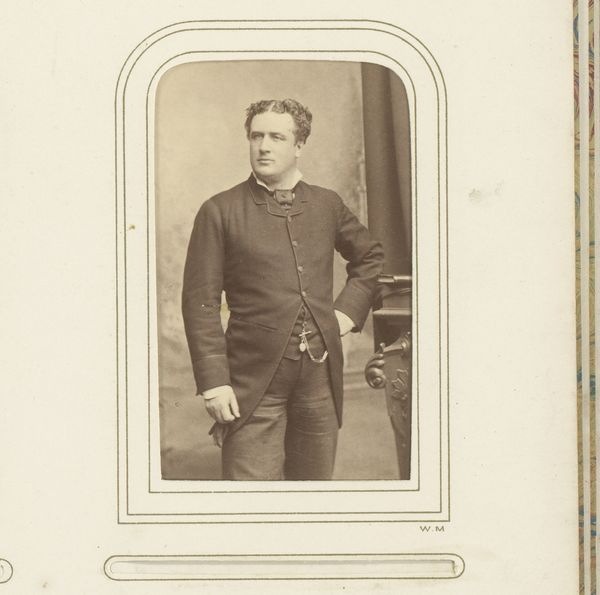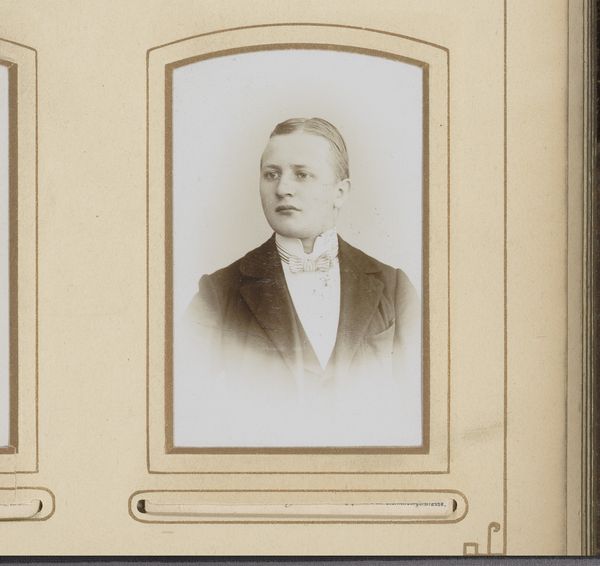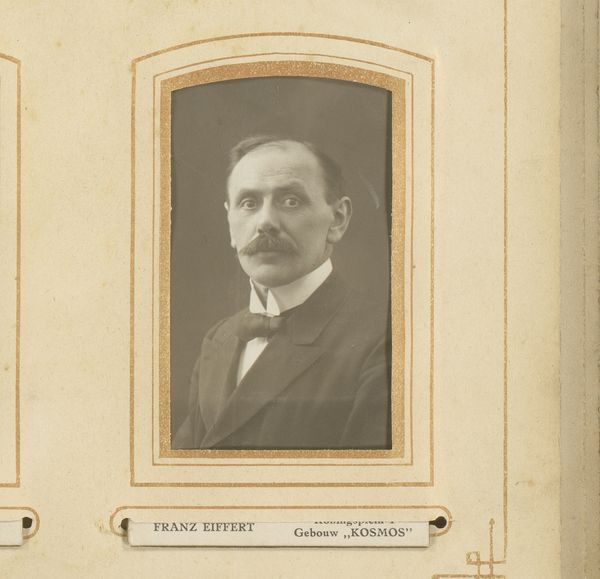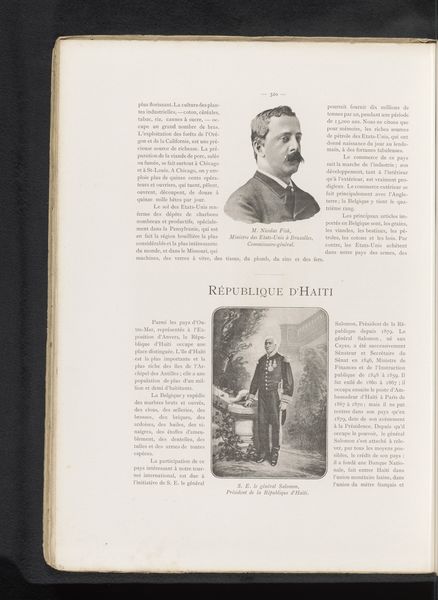
Henry W. Grady, The Atlanta Constitution, from the American Editors series (N35) for Allen & Ginter Cigarettes 1887
0:00
0:00
drawing, coloured-pencil, lithograph, print
#
portrait
#
drawing
#
art-nouveau
#
coloured-pencil
#
lithograph
# print
#
coloured pencil
#
history-painting
Dimensions: Sheet: 2 7/8 x 3 1/4 in. (7.3 x 8.3 cm)
Copyright: Public Domain
Curator: This lithograph from 1887, found here at the Metropolitan Museum of Art, is from the "American Editors" series of Allen & Ginter cigarette cards. It depicts Henry W. Grady of the Atlanta Constitution, alongside a portrait of the Courthouse-Atlanta. Editor: My first impression is that it presents a stark contrast. The courthouse looks stately, even powerful, next to the more intimate, softer portrait of Grady. It feels almost propagandistic, meant to instill faith in civic institutions and public figures. Curator: Indeed. We must consider these cards within their material culture. They weren't intended as "high art," but as inexpensive collectibles distributed with mass-produced cigarettes. The means of production shaped the aesthetic and its reach. The color lithography would've been a relatively recent advance allowing them to print vibrant and cheap images. Editor: And yet, look at the symbols used. Grady, front and center, next to his newspaper’s masthead, implying his importance. And the courthouse itself! Its clock tower signifies progress, time, civic order. It speaks to the ambitions of a “New South” being reconstructed after the Civil War. The horses, though small, suggest vitality and forward momentum. Curator: I see that, but I can’t ignore how Allen & Ginter commodified even these aspirations, packaging them with a highly addictive product. The card itself becomes part of the market, consumed and discarded or hoarded, driving both cigarette sales and potentially fostering these very ideals in a popular way. It's really a masterful piece of commercial design, if you look beyond its surface beauty. Editor: Precisely. The beauty isn’t just superficial. The images were intentionally designed to resonate on a deeper level, tapping into hopes for the future while subtly reinforcing hierarchies and systems of power through potent symbols. The courthouse isn't simply a building, it is the essence of Atlanta's rising hopes visualized for a mass consumer base. Curator: So, as a piece of ephemera it’s not just an attractive collectible. It is a fascinating little artifact illustrating the intricate link between the commercial pressures and societal hopes prevalent at the time. Editor: Agreed. A window, not just onto a face and a building, but onto the aspirations embedded within a moment in time. It reminds us how images can speak volumes, even on something as humble as a cigarette card.
Comments
No comments
Be the first to comment and join the conversation on the ultimate creative platform.
